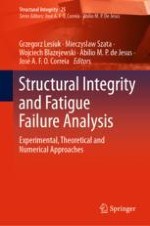This book contains full papers presented at the First Virtual Conference on Mechanical Fatigue (VCMF 2020), which was organised by the University of Porto (FEUP, Portugal), the Wroclaw University of Science and Technology (Poland), University of Electronic Science and Technology of China (China), Siberian Federal University (Russia), and the ESIS/TC12 Technical Committee (European Structural Integrity Society–ESIS), between 9 and 11 of September 2020. This conference was intended to be a forum of discussion of new research concepts, equipment, technology, materials and structures and other scientific advances within the field of mechanical fatigue and fracture. The first edition of the VCMF 2020 event has reached more than 60 participants from more than 20 nationalities demonstrating the vitality of this new event.
